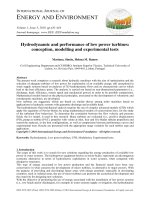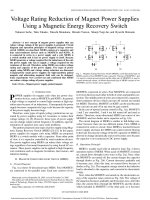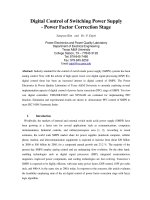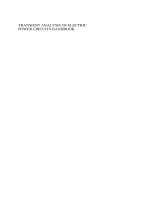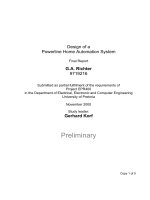Growth of Presidential Power
Bạn đang xem bản rút gọn của tài liệu. Xem và tải ngay bản đầy đủ của tài liệu tại đây (94.23 KB, 11 trang )
ASSIGNMENT-Awesome
AP US Govt.
February 27, 2013
Growth of Presidential
Power
Objective: What are the
constitutional powers of the
President and how does he
utilize these powers
Think: Presidential Power
FORMAL POWERS V. INFORMAL POWERS
DIFFERENCES
1. FORMAL POWERS written down…
Commander in Chief (Const.)
2. INFORMAL POWERS not written down,
but power is exercised… Electronic Throne
1.
2.
II. Non-Constitutional sources
of Presidential Power:
Unity of office: one man vs. 535
Presidential character/personality Barber
1.
Strong vs. Weak-Examples
3.
Growing complexity of society –
4.
Congressional delegation of authority
1.
2.
Congress, bows to Preseconomic/foreign crisis
Mandate (Reagan-1980-489 electoral votes)
II. Continued…
5. Increase in media -Electronic Throne
NEW media6. Superpower after WWII:
1. Cold War,
2. Terrorism3. Various foreign crisis
III. 3 rules of thumb to maximize
presidential power/effectiveness
1. “Move it or lose it”-When to get things
done (next slide)
2. “Avoid details”-Reagan/Bush
3. Trust your staff vs. Cabinet
Identify 1 trend
Roles of the President
AP US Govt.
Objective: Learn and understand the
constitutional powers of the
president and the checks put in
place to avoid absolute rule!
I. Non-constitutional roles (407-425)
1. Head of Political Party:
1. Selects party’s chairman of the national
committee (RNC, DNC)
2. VP nominee
3. Political patronage
2. Chief Economist
1. Responsible for overall health of economy
2. Proposes national budget-congress can debate &
propose changes
3. Leader of the Free World
II. Constitutional Roles: Article II
(407-425) What are the powers of the president within each role
and what are the checks placed upon him:
1.
Chief Legislator
1.
2.
2.
Chief Executive
1.
2.
3.
Powers
Checks
Powers
Checks
Commander in
Chief
1.
2.
Powers
Checks
4. Chief Diplomat
1. Powers
2. Checks
5. Chief of State
1. Powers
6. Chief Jurist
1. Powers
2. Checks
II. Constitutional Roles: Article II
1.Chief Legislator
4.
1.
•
1. Powers
• Propose legislation, vetoes, call
special sessions, SOTU, sign laws
1. Checks
• Override veto, Congress not pass
legislation
1.
•
1.Chief Executive
1. Powers
• Enforce laws, treaties, court cases,
appoint officials,
1. Checks
• Reject appts., Impeach – removal,
SC strike down executive orders
1.Commander in Chief
1. Powers
• Head of armed forces
1. Checks
• Declare war, power of purse, War
Powers Act 1973
Chief Diplomat
•
5.
Chief of State
1.
•
6.
Powers
Appoints/receives ambassadors,
negotiates treaties/exec.
agreements
Checks
Senate reject ambassadors and
treaties
Congress appropriates funds
Powers
Ceremonial head of state,
baseball first pitch, bestows
medal of honor
Chief Jurist
1.
•
1.
•
Powers
Appoints fed. Judges, issues
pardons
Checks
Senate can reject appointments,
filibuster nominations

